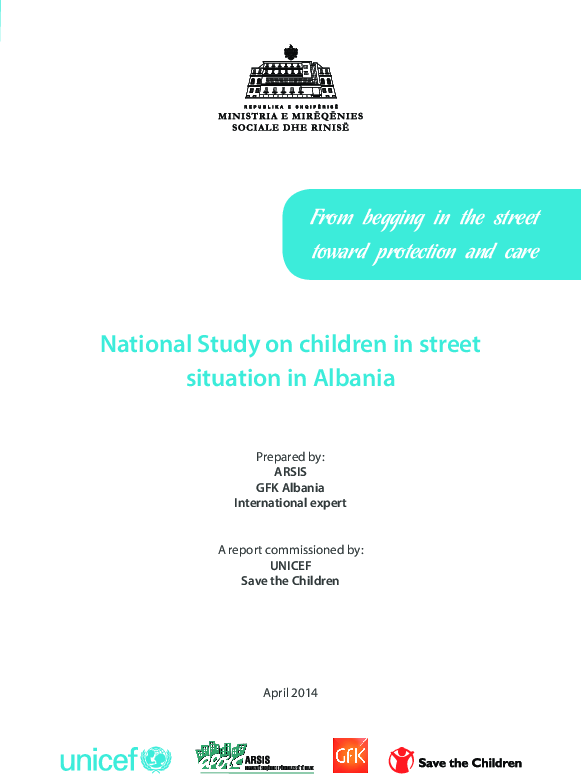
Publication year:
2014
English
Format:
pdf (7.2 MiB)
Publisher:
Save the Children,UNICEF, United Nations Children's Fund
For the past 23 years, Albanian society has been affected by the increasing frequency of children in a ‘street situation’. This national study is a pioneering attempt to analyze the situation and develop lasting solutions.
The main demographic findings show that the majority of children in a street situation are boys aged 10-17 years old: in both counting phases, twice as many boys were seen than girls (70.1% or 1476 boys, and 29.9% or 538 girls in wave 1; 74% – 1882 boys and 26% – 645 girls in wave 2), however a more even distribution between the genders is seen amongst younger children. Almost a third of children in street situation are 15-17 year old adolescents (on average 29.5% or 745 children), while children from 4-14 years of age were 66.5%, and there were a significant number of infant children from 0-3 years old (4% on average). Quite a number of younger children (0-5 year olds) accompany their mothers while begging (wave 1: 11.66%; wave 2: 13.9%).
Based on responses in initial interviews, a quarter of the children identified belonging to the Albanian majority while 74.3% (581 out of 782 children) belong to the Roma and Egyptian communities. There is a twofold significance to this data: firstly, the number of Albanian majority children in street situation is higher than expected, and secondly, since the other ethnic minorities or language groups account for no more than 1% of the total Albanian population, the study confirms that the incidence of children in street situation from these ethnic minority groups is disproportionately high.
It is expected that results from of this study will play a significant role in the National Reform of Social Services, undertaken by the Ministry of Social Welfare and Youth, and will be used for the finalization of Albanian National Action Plan and Guideline Working Procedures for children in street situation. The results of the study will serve as the first baseline for children in street situation in Albania for future research projects at national level and inform the design of interventions across the country for their benefit.
Read full abstract
Format
Content type
Country
Region
Rights
© Author/Publisher
If you have noticed a document assigned to the wrong author or any other inaccuracies, let us know! Your feedback helps us keep our data accurate and useful for everyone.
Share
Link